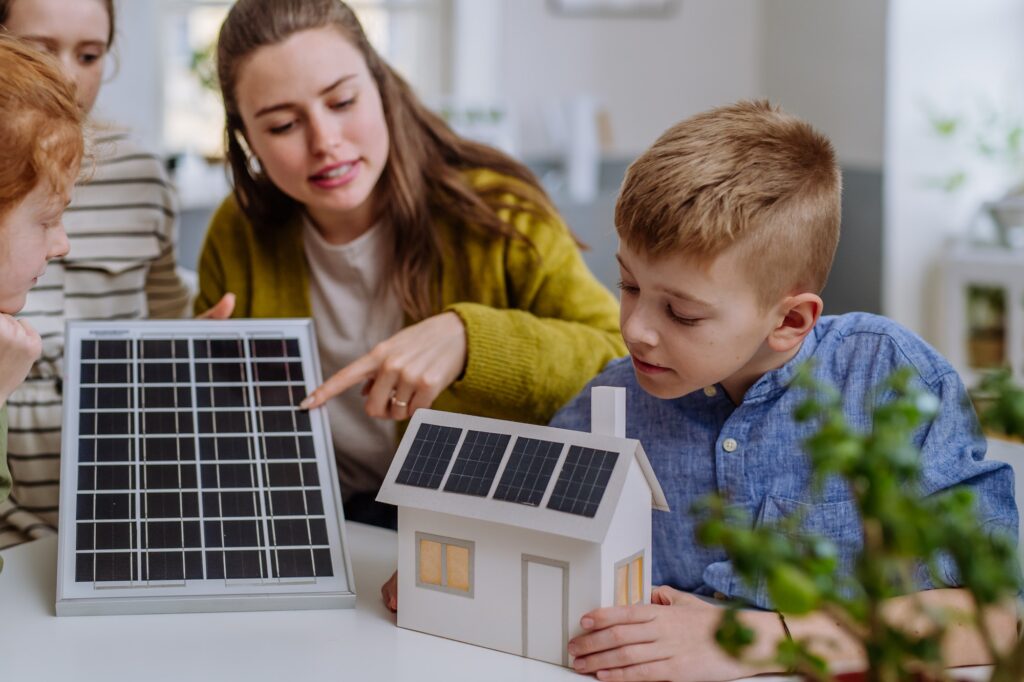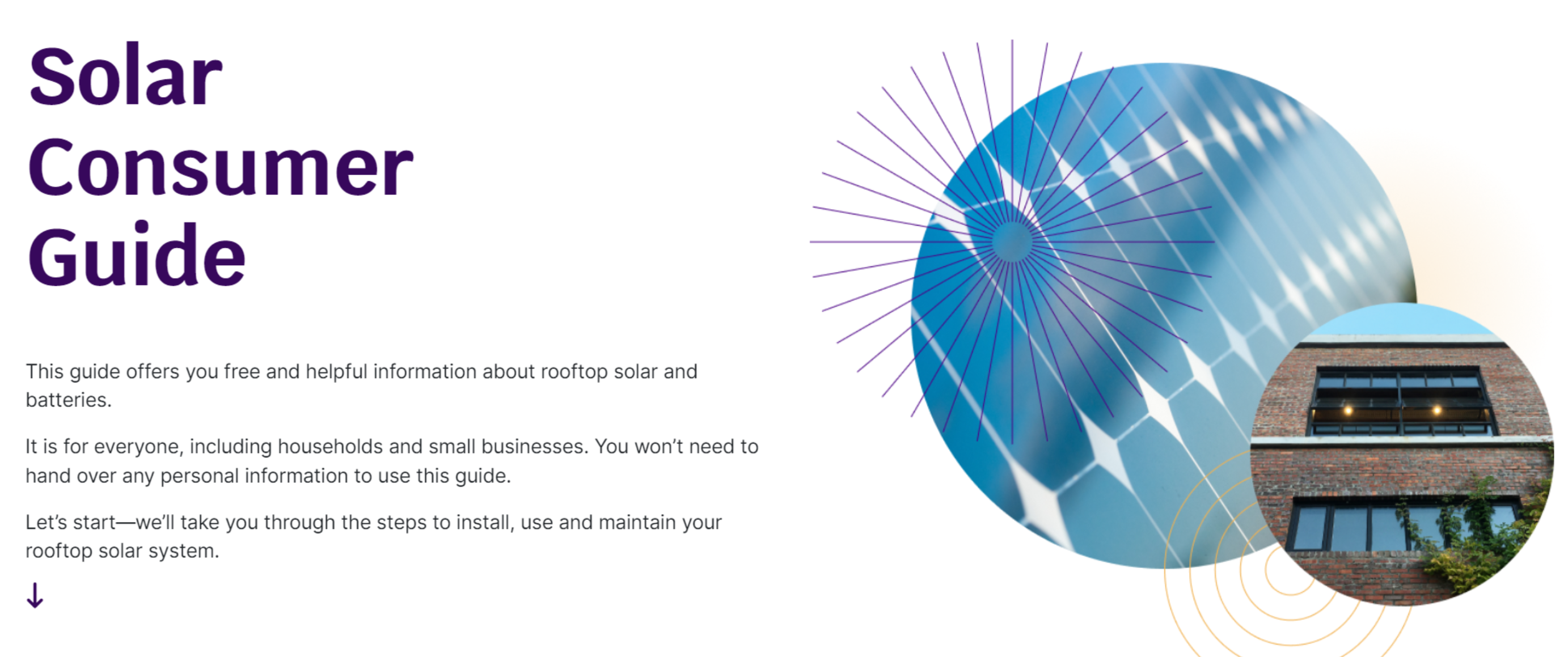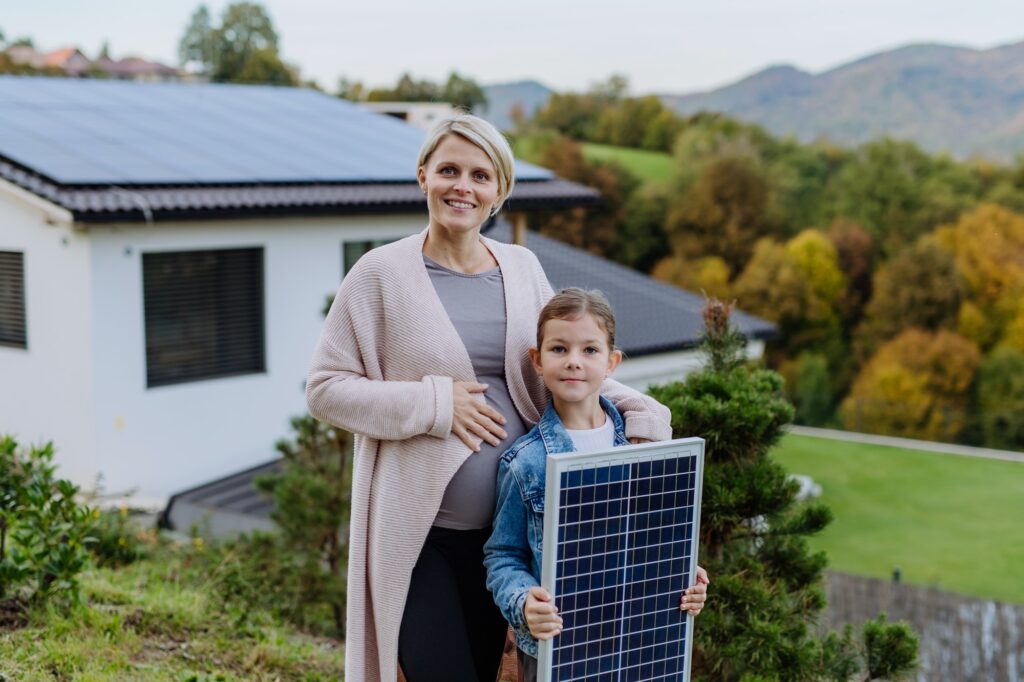Understanding Solar
The Australian Government has recently launched a guide for households and small businesses interested in rooftop solar and batteries, which you may find helpful when understanding solar and what it can do for you.
Solar Accreditation Australia has an important role to play in helping consumers’ understanding solar and how SAA-accredited solar designers and installers can assist. We have put together the following information to help you navigate the process of having solar panels installed. If you have any questions, your local SAA-accredited solar experts will be happy to answer them.

What is solar energy?
Solar energy is a clean and sustainable option for power compared to fossil fuels. It works by using solar panels, also known as photovoltaic (PV) panels, to turn sunlight into electricity. In a standard solar power setup, these panels convert sunlight into direct current (DC) electricity. Then, inverters change this power into alternating current (AC), which can be added to the electricity grid.
According to Australian government data, in 2022, solar power provided 14% of Australia’s electricity. Rooftop solar generation installed by homeowners and businesses grew 18% in 2022, and by an average of 22% per year since 2015. Large-scale solar generation – sometimes called solar farms, solar power plants or utility-scale solar – provided 5% of all Australian electricity generation in 2022.
Choosing solar power for your home
The key to understanding solar is to figure out your energy needs. If you want to use solar energy and save money, start by checking your old electricity bills. Find the average amount of electricity you use each month, measured in kilowatt-hours (kWh). For example, if you use around 1000 kWh per month, you'll need solar panels that can generate at least that much electricity. If you're unsure, ask a solar expert for advice.
Check your roof. The size and direction of your roof matter when picking solar panels. The size decides how many panels you can have, while the direction affects how well they work. In Australia, panels facing north work best, but east and west-facing ones can also work well. If you want an in-depth assessment, ask a solar expert for guidance.
Set your budget. Make sure to find solar panels that give you good value for your money. The Australian government offers a rebate that can assist with the cost of installing solar at your property Depending on where you live, you might get more funding. Your Solar Accreditation Australia-accredited expert can tell you about this. Alternatively, you can check with you state or territory government website for further information on rebate schemes.
Check solar brands. To get a federal government rebate, make sure your solar panels are on the approved product list. Your solar expert can help you choose a trustworthy brand that will meet your requirements.
Get quotes. Get quotes from at least three different solar installers and make sure they are accredited by Solar Accreditation Australia. This helps you find the best price for your solar system and ensures that your installer is enrolled in a continuing professional development scheme to stay up to date with best practice.

Installation and maintenance
The Australian Standards for solar installation requires you are given documentation for your system to ensure you are understanding solar. Your solar installer will give you information on how to safely turn your system on and off and who to contact for warranties. This is also important for anyone servicing your system. To keep your system working well, it's recommended your solar panels are serviced at least once every two years. Your solar installer will provide a schedule for maintenance.


